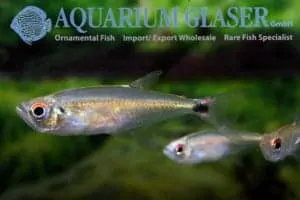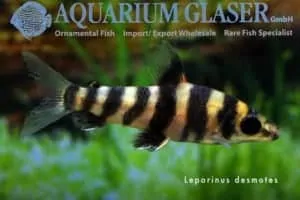Hypostomus plecostomus – Suckermouth Catfish
The common Suckermouth Catfish or Hypostomus plecostomus is the most commonly offered catfish in the aquarium trade. However, there are more than 120 Hypostomus species, almost all of which are offered under the name Hypostomus plecostomus and are quite similar, which makes telling the species apart not easy.
Their common name is Suckermouth Catfish.
Over time, this species has also seen many scientific names. Synonyms are: Acipenser plecostomus, Plecostomus plecostomus, Pterygoplichthys plecostomus, Hypostomus guacari, Loricaria flava, Plecostomus bicirrosus, Plecostomus brasiliensis.
Diet
The diet of this catfish consists mainly of vegetable food. Apart from long thread algae, it will clean up all algae in the aquarium. As soon as the tank is free of algae, they sometimes start to eat soft plant leaves. They must therefore be fed vegetables at this point to prevent them from starving.
Their succer mouth has grown into a kind of suction cup with a large number of small teeth on it. With its mouth it scrapes the algae from plants and windows. In nature it occurs in fast-flowing streams and rivers where it clings to the substrate with the help of its sucker mouth. When they are not busy scraping off the algae, they usually look for a cave or dark surface where they can hang or lie quietly for hours.
The Aquarium
In the aquarium this species remains much smaller than in the wild. They usually do not grow larger than about 25 centimeters in the aquarium, while in the wild they sometimes grow up to 60 centimeters. They grow very slowly, so a smaller aquarium is sufficient for the first few years. Once they have grown a bit larger, they will have to be moved to a more suitable aquarium. They can reach an age of about 15 years and all the while they continue to grow slowly.
Breeding Hypostomus plecostomus – Suckermouth Catfish
As far as we know, they have not yet been bred in the aquarium. What makes breeding in the aquarium difficult is that the difference between male and female is not visible. They also form a territory, which makes it difficult to keep multiple specimens together. In Asia, breeding is carried out on a large scale, but this takes place in large basins with steep muddy banks. The parents must then be larger than 30 centimeters before they produce offspring. A couple then digs a hole in which they lay about 300 eggs. After a while, the basin is pumped. After this, they simply remove the parents and young from the basin.
Video
Author
John de Lange
Copyright images
John de Lange













Reviews
There are no reviews yet.